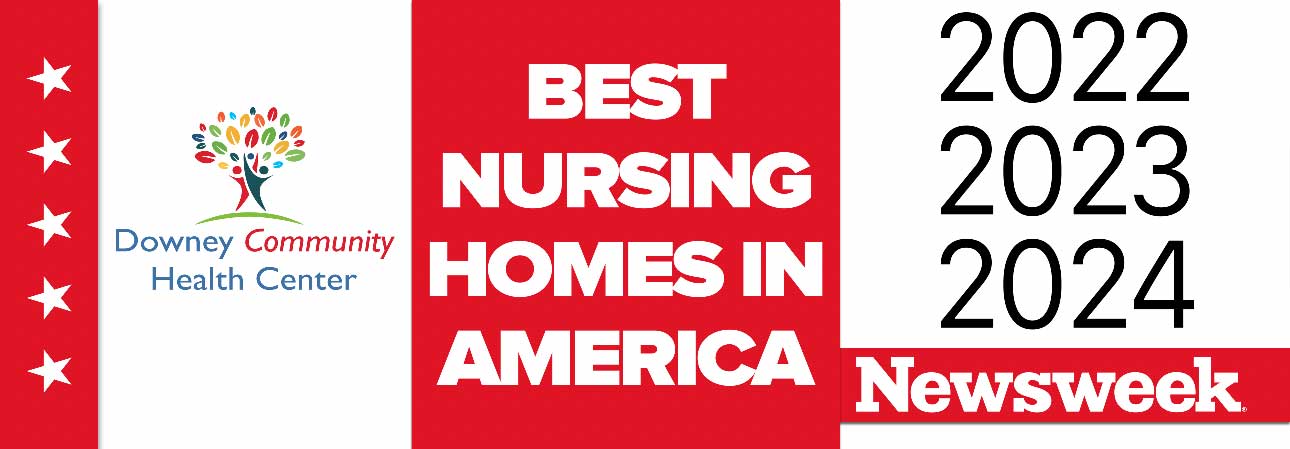Navigating the complexities of nursing home rehabilitation requires a thorough understanding of Medicaid coverage. This article provides an overview of the rehabilitation process within nursing homes and discusses the crucial role Medicaid plays in covering these services.
Understanding these elements is vital for ensuring timely and comprehensive care and maximizing financial resources. Patients and families can more effectively manage transitions and secure essential rehabilitation services by exploring the nuances of Medicaid coverage.
Medicaid Basics
Medicaid is a joint federal and state program that provides health coverage to eligible low-income individuals. It covers a wide range of medical services, including doctor visits, hospital stays, preventive care, and long-term care services. For seniors, Medicaid plays a crucial role in covering nursing home care and home and community-based services.
Eligibility for Medicaid is primarily based on income and assets, but criteria can vary by state. Generally, applicants must have limited income and resources to qualify. For seniors, there are often special eligibility rules for long-term care coverage.
Medicaid is particularly important in senior care and rehabilitation. It’s the primary payer for long-term nursing home care in the United States, covering services that Medicare doesn’t. For rehabilitation, Medicaid can cover physical therapy, occupational therapy, and other services to help seniors regain independence after illness or injury.
Understanding Medicaid’s coverage and eligibility requirements is crucial for seniors and their families planning for long-term care needs.
Nursing Home Rehabilitation Explained
Nursing home rehabilitation is a specialized form of care designed to help individuals recover from injuries, illnesses, or surgeries. It typically occurs in skilled nursing facilities and aims to restore patients’ functional abilities and independence.
Common rehabilitation services provided in nursing homes include physical therapy, occupational therapy, and speech therapy. Physical therapy focuses on improving mobility, strength, and balance. Occupational therapy helps patients regain the ability to perform daily living activities independently. Speech therapy addresses communication and swallowing difficulties.
The duration of rehabilitation in a nursing home varies depending on the individual’s needs and progress. Medicare typically covers up to 100 days of skilled nursing care, including rehabilitation, per benefit period. However, the actual length of stay is determined by the patient’s medical condition and recovery rate. The primary goals of nursing home rehabilitation are to:
- Maximize physical function and independence
- Prevent further decline or complications
- Prepare patients for a safe return home or transition to a less intensive care setting
Rehabilitation programs are tailored to each patient’s specific needs and may involve a combination of exercises, therapeutic activities, and education. The interdisciplinary team, including doctors, nurses, and therapists, works together to create and implement personalized care plans, regularly assessing progress and adjusting treatment as needed.
Your Path to Healing Starts Here
Reach out to our friendly admissions team! We’re here to answer your questions and help you find the right care solutions.
Medicaid Coverage for Nursing Home Rehabilitation
Medicaid’s coverage for nursing home rehabilitation varies depending on whether it’s short-term or long-term care. For short-term rehabilitation, Medicaid coverage is limited in most states. Unlike Medicare, Medicaid typically doesn’t have a specific short-term therapy benefit. However, some states offer programs like PACE (Program of All-Inclusive Care for the Elderly) to supplement senior care coverage1.
For long-term rehabilitation and nursing home care, Medicaid is often the primary payer. It covers services that Medicare doesn’t, including extended stays in nursing facilities for those who meet eligibility criteria.
To qualify for Medicaid coverage in rehabilitation settings, individuals must meet both financial and medical necessity criteria. Financial eligibility is based on income and assets, with specific thresholds varying by state. Medical necessity typically requires a doctor’s certification that the individual needs skilled nursing care or rehabilitation services.
It’s important to note that Medicaid eligibility and coverage can differ significantly from state to state. Some states may offer more comprehensive coverage for rehabilitation services, while others may have stricter eligibility requirements or more limited benefits. Individuals seeking Medicaid coverage for rehabilitation should consult their state’s Medicaid office or a healthcare advisor to understand their specific options and requirements.
Types of Rehabilitation Services Covered by Medicaid
Medicaid typically covers a range of rehabilitation services, though specific coverage can vary by state. Physical therapy is commonly covered, focusing on improving mobility, strength, and physical function. This may include exercises, manual therapy, and modalities to address injuries, chronic conditions, or post-surgical recovery.
Occupational therapy is another key service often covered by Medicaid. It aims to help individuals perform daily living activities independently, such as dressing, eating, or working. Occupational therapists may use adaptive equipment and teach new techniques to improve function.
Speech therapy is generally included in Medicaid coverage, addressing communication disorders, swallowing difficulties, and cognitive issues. This can be crucial for stroke recovery, developmental disorders, or conditions affecting speech and language. Other specialized rehabilitation services that may be covered include:
- Respiratory therapy for breathing disorders
- Cardiac rehabilitation for heart conditions
- Cognitive therapy for brain injuries or neurological disorders
- Vision therapy for certain eye conditions
The extent of coverage for these services often depends on medical necessity, as determined by a physician’s referral. Some states may have limits on the number of sessions covered per year or require prior authorization for certain services. It’s important for patients to check with their state’s Medicaid program or a healthcare provider to understand the specific rehabilitation services available to them.
Medicaid Coverage for Skilled Nursing Facility Care
Skilled nursing care involves specialized medical services provided by licensed professionals in a dedicated facility. It typically includes 24-hour supervision, nursing care, and rehabilitation services for individuals recovering from illness, injury, or surgery.
Medicaid defines skilled nursing services as those requiring the expertise of qualified health professionals such as registered nurses, licensed practical nurses, and therapists. These services are either directly provided by or supervised by these professionals. Medicaid coverage for skilled nursing facility care generally includes:
- Nursing care and round-the-clock supervision
- Room and board
- Physical, occupational, and speech therapy
- Medications and medical supplies
- Personal care assistance
However, coverage can vary by state. To qualify, individuals must meet both financial eligibility criteria and demonstrate a medical need for this level of care. Coverage limitations may include:
- State-specific caps on the duration of coverage
- Requirements for periodic reassessments to confirm ongoing need
- Limitations on specific services or therapies
- Potential co-payments or cost-sharing requirements
Exceptions to these limitations might be made for individuals with certain chronic conditions or those requiring specialized care. It’s crucial for patients and families to consult their state’s Medicaid office or a healthcare advisor to understand specific coverage details and potential out-of-pocket costs.
Empower Your Recovery Journey
Explore our tailored rehabilitation programs designed just for you! Together, we can help you achieve your health goals.
Medicaid Coverage for Inpatient vs. Outpatient Rehabilitation
Medicaid coverage for rehabilitation services differs between inpatient and outpatient settings. Inpatient rehabilitation involves 24-hour care in a facility, while outpatient rehabilitation allows patients to receive treatment while living at home.
Inpatient rehabilitation typically offers more intensive, round-the-clock care, including medical supervision, therapy sessions, and support services. Outpatient rehabilitation provides more flexibility, with scheduled therapy sessions and treatments that allow patients to maintain their daily routines.
Medicaid coverage for inpatient rehabilitation usually includes room and board, nursing care, therapy services, and medications. Coverage duration is based on medical necessity. For outpatient rehabilitation, Medicaid often covers therapy sessions, but may limit the number of visits per year.
The main difference in Medicaid coverage is that inpatient care is generally more comprehensive but may have stricter eligibility criteria and coverage limits. Outpatient care offers more flexibility but might have more restrictions on covered services. Both types of care require a doctor’s certification of medical necessity for Medicaid coverage.
Eligibility for Medicaid Rehabilitation Coverage
Eligibility for Medicaid rehabilitation coverage typically requires meeting both medical necessity and financial criteria. Medical need is usually determined by a physician’s order indicating that rehabilitation services are necessary for the patient’s condition. This may include physical therapy, occupational therapy, or speech therapy for recovery from injuries, surgeries, or chronic conditions.
Financial eligibility is based on income and assets, with thresholds varying by state. Generally, individuals must have limited income and resources to qualify. Some states use Modified Adjusted Gross Income (MAGI) to determine eligibility, while others may have different criteria for aged, blind, or disabled individuals.
The Medicaid application process for rehabilitation coverage involves submitting an application to the state Medicaid agency. This usually includes providing documentation of income, assets, and medical need. Some states may require a separate application for long-term care services, including rehabilitation. The process can involve waiting periods and may require periodic reassessments to confirm ongoing eligibility for services.
It’s important to note that specific eligibility requirements and application procedures can vary significantly between states.
How Medicaid Coordinates with Medicare for Rehabilitation Services
Medicaid and Medicare often work together to provide comprehensive coverage for rehabilitation services, especially for individuals who are dual eligible (qualify for both programs). Medicare is a federal health insurance program primarily for people 65 and older, while Medicaid is a joint federal and state program for low-income individuals.
For dual-eligible individuals, Medicare typically acts as the primary payer for rehabilitation services, covering the first 100 days of skilled nursing facility care after a qualifying hospital stay. Medicaid then steps in as a secondary payer, potentially covering additional services or longer-term care that Medicare doesn’t.
When Medicare covers rehabilitation first, it generally pays for short-term, intensive rehabilitation services. Once Medicare coverage is exhausted or if the individual requires long-term care, Medicaid may take over, covering extended stays in nursing facilities or providing home and community-based services.
The coordination between these programs aims to ensure that eligible individuals receive comprehensive care without gaps in coverage. However, the specifics of this coordination can vary by state and individual circumstances.
Length of Stay and Rehabilitation Coverage Limits
Medicaid’s coverage duration for rehabilitation in a nursing home varies by state and individual needs. Unlike Medicare’s 100-day limit, Medicaid can provide long-term coverage as long as medical necessity continues. However, many states implement their own limitations or require periodic reassessments.
The maximum days of coverage for skilled nursing and rehabilitation under Medicaid are not universally defined. Coverage can extend for months or even years if the individual meets ongoing eligibility criteria and demonstrates a continued need for care.
Limitations may include state-specific caps on coverage duration or requirements for regular reassessments. Extensions to coverage are often possible if medical necessity persists. Some states may require prior authorization for extended stays or implement stricter criteria for long-term coverage.
It’s crucial for patients and families to consult their state’s Medicaid office for specific policies regarding length of stay and coverage limits.
Applying for Medicaid Coverage for Rehabilitation
State’s Medicaid office or visit their website to begin the application process. Each state has its own procedures, but most allow online, phone, or in-person applications.
Required documentation typically includes:
- Proof of income (pay stubs, tax returns)
- Proof of residency
- Identification (driver’s license, birth certificate)
- Social Security number
- Medical records demonstrating need for rehabilitation
To navigate the approval process:
- Submit a complete application with all required documents
- Respond promptly to any requests for additional information
- Follow up regularly on your application status
- Consider seeking assistance from a social worker or patient advocate
Be prepared for potential waiting periods and remember that approval may require periodic reassessments to confirm ongoing eligibility. If initially denied, you have the right to appeal the decision. Understanding your state’s specific requirements and maintaining open communication with the Medicaid office can help streamline the process.
Understanding Medicaid Denials for Rehabilitation Coverage
Understanding Medicaid denials for rehabilitation coverage is crucial for patients seeking necessary care. Common reasons for denial include:
- Lack of medical necessity
- Incomplete documentation
- Exceeding coverage limits
- Not meeting financial eligibility criteria
To appeal a Medicaid denial:
- Review the denial notice carefully
- Request an appeal within the specified deadline (usually 30-90 days)
- Gather supporting medical documentation
- Consider seeking legal assistance or a patient advocate
If reapplying after a denial:
- Address the specific reasons for the initial denial
- Provide updated medical records demonstrating need
- Ensure all financial documentation is current and complete
- Consider working with a Medicaid planner or social worker
Throughout the process, maintain open communication with your healthcare providers and the Medicaid office. Remember that persistence and thorough documentation are key to overcoming denials and securing necessary rehabilitation coverage.
Transitioning from Rehabilitation to Long-Term Care
Transitioning from rehabilitation to long-term care often occurs when a patient’s progress plateaus or when they require ongoing assistance beyond the scope of short-term rehab. This shift typically involves reassessing the patient’s needs and adjusting care plans accordingly.
Medicaid coverage for long-term care after rehabilitation can be more comprehensive than short-term rehab coverage. It may include extended nursing home stays, home health services, or community-based care programs. However, eligibility criteria are often stricter for long-term care.
Planning for long-term care beyond rehabilitation involves:
- Evaluating the patient’s ongoing needs
- Exploring various care settings (e.g., nursing homes, assisted living, home care)
- Reassessing financial resources and Medicaid eligibility
- Considering legal aspects like power of attorney and advance directives
- Involving family members in care decisions
This transition requires careful medical, financial, and personal consideration to ensure appropriate ongoing care.
Summary
In conclusion, navigating the complexities of Medicaid and Medicare for rehabilitation and long-term care requires a thorough understanding of both programs’ coverage limits and eligibility criteria. By actively engaging with state Medicaid offices, preparing comprehensive documentation, and staying informed about individual needs and rights, patients and families can better secure necessary services.
Persistence, proactivity, and collaboration with health professionals and advocates are essential to ensuring seamless transitions and comprehensive care for eligible individuals.
Navigate Medicaid with Confidence
Let us guide you through the Medicaid coverage process for rehabilitation and long-term care. Contact us today for personalized support!







